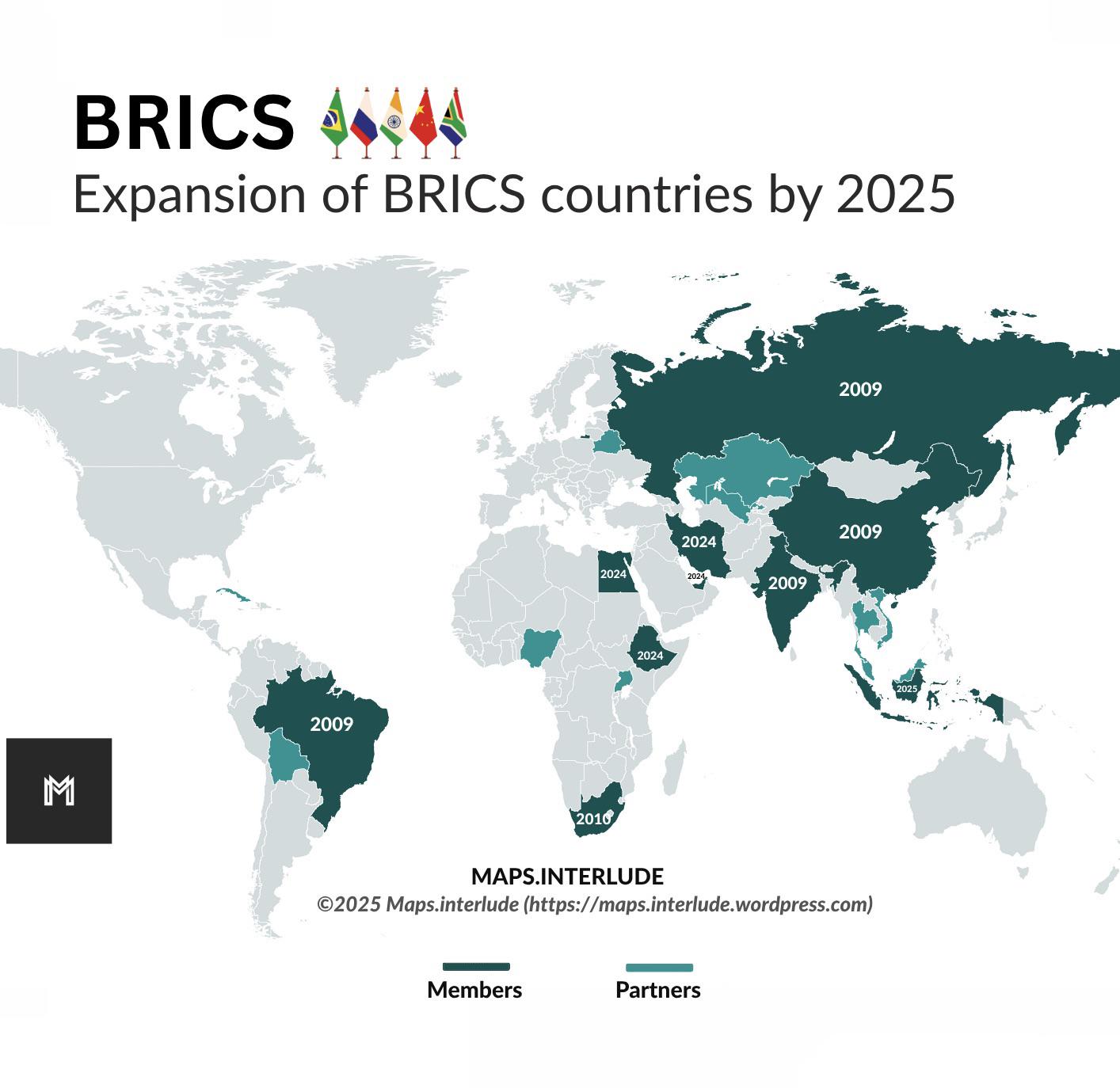BRICS Countries Expansion Map


Marcus Rodriguez
Historical Geography Expert
Marcus Rodriguez specializes in historical cartography and geographic data analysis. With a background in both history and geography, he brings unique...
Geographic Analysis
What This Map Shows
This map illustrates the expansion of the BRICS countries, which includes Brazil, Russia, India, China, and South Africa. The visualization highlights the member nations and provides insight into the geopolitical dynamics that have led to the inclusion of new members as part of the bloc's ongoing development. As the BRICS organization seeks to enhance its global influence, understanding the geographical distribution and the implications of this expansion is vital.
Deep Dive into BRICS Expansion
BRICS is not just a collection of emerging economies; it's a coalition that represents a significant portion of the world's population and economic output. The original members—Brazil, Russia, India, China, and South Africa—came together in 2010 with the aim of fostering cooperation in various fields, including economics, politics, and culture. The recent expansion discussions showcase a growing interest from other nations in joining this influential group.
Interestingly, the BRICS countries collectively account for over 40% of the global population and about 25% of the world's GDP. This is a substantial figure, especially when you consider the geopolitical weight that comes with such demographics. The economic strategies and policies shaped within this group can have a far-reaching impact on global trade, investment, and development.
In recent years, several countries have expressed their desire to join BRICS, indicating a shift towards a multipolar world where economic power is not solely concentrated in the West. The inclusion of new members can lead to a stronger collective bargaining power on global issues such as climate change, trade disputes, and economic sanctions. Furthermore, the expansion may also enhance intra-BRICS trade, which has already been on the rise, showing a healthy 15% increase in trade among member countries over the past five years.
Regional Analysis
The map provides a clear delineation of the BRICS countries and the regions they represent. For instance, Brazil and South Africa represent Latin America and Africa, respectively, while Russia and India represent Eastern Europe and South Asia. China, as the economic powerhouse, leads the East Asian region. Each of these regions has unique economic strengths and challenges, which contribute to the collective goals of BRICS.
In South America, Brazil's vast natural resources and agricultural capabilities position it as a leader in food production, while in Africa, South Africa's developed infrastructure and financial markets play a crucial role in the continent's economic stability. On the other hand, India’s burgeoning technology sector and Russia's energy exports provide a diverse economic framework that the BRICS group can leverage.
Interestingly, as countries from the Middle East and Asia express interest in joining BRICS, we may witness a geographical shift in economic alliances that could redefine global trade routes and partnerships. For example, nations like Indonesia and Turkey have been mentioned as potential candidates, which would expand BRICS influence into Southeast Asia and the Mediterranean, respectively.
Significance and Impact
The expansion of BRICS is significant for several reasons. First, it underscores a shift in global economic power dynamics, moving away from Western-dominated institutions towards a more inclusive approach that acknowledges the rising influence of emerging economies. This could lead to a more balanced global governance system.
Furthermore, the implications of this expansion are profound. As BRICS solidifies its position in international affairs, it may challenge existing trade agreements and economic practices, pushing for reforms that favor developing nations. For instance, discussions around creating a BRICS currency or alternative payment systems could lessen reliance on the US dollar, which has long been the dominant currency in global trade.
Looking ahead, the future of BRICS seems promising, but it also faces challenges. Internal disparities among member countries regarding political governance, economic stability, and development priorities could pose risks to its cohesion. However, if managed effectively, the expansion of BRICS may herald a new era of global cooperation that prioritizes equity and sustainable development across diverse regions. Have you noticed how the landscape of international relations is evolving? The BRICS expansion is a clear indicator that the world is changing, and it’s essential to stay informed about these shifts.
Visualization Details
- Published
- October 13, 2025
- Views
- 32
Comments
Loading comments...